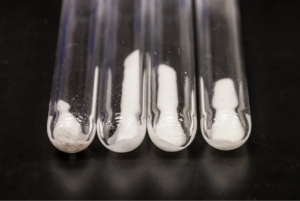Microsoft and the Pacific Northwest National Laboratory (PNNL) have discovered a new type of solid electrolyte that could be used in future batteries with the help of artificial intelligence. The new substance is less likely to burn than today’s lithium-ion batteries. It also uses less lithium, which is increasingly hard to come by as demand for rechargeable EV batteries skyrockets.
While there is still a long way to go to see how viable this material is as an alternative to traditional lithium-ion batteries, researchers are most excited about the potential of generative AI to speed up their work. This discovery is just the first of many materials they will test in their search for a better battery.
“The most important thing is the speed with which we arrived at a new idea, new material. If we see that kind of acceleration, I would have bet that this is the way of the future to find these types of materials,” said Karl Mueller, director of PNNL’s Office of Program Development.
Microsoft reached out to PNNL researchers last year to offer its Azure Quantum Elements (AQE) platform, which combines high-performance computing and artificial intelligence, and eventually quantum computing. The company launched it last year as a custom tool for chemistry and materials science discoveries.
The researchers asked AQE about battery materials that use less lithium and quickly came up with 32 million different candidates. From there, the AI system had to identify which of those materials would be stable enough to use—there were eventually about 500,000 of them. They used more filters to infer how well each material can conduct energy, simulate the movement of atoms and molecules in each material, and determine how practical each candidate would be in terms of cost and availability.
In the end, 23 candidates remained, five of which were already known materials. The entire separation took only 80 hours, a feat so fast that it would have been impossible without AI and AQE.
“Thirty-two million is something we could never do. Imagine a person sitting and looking through 32 million materials and choosing one or two of them. It just doesn’t happen,” said Vijay Murugesan, a specialist at PNNL.
Source: The Verge

